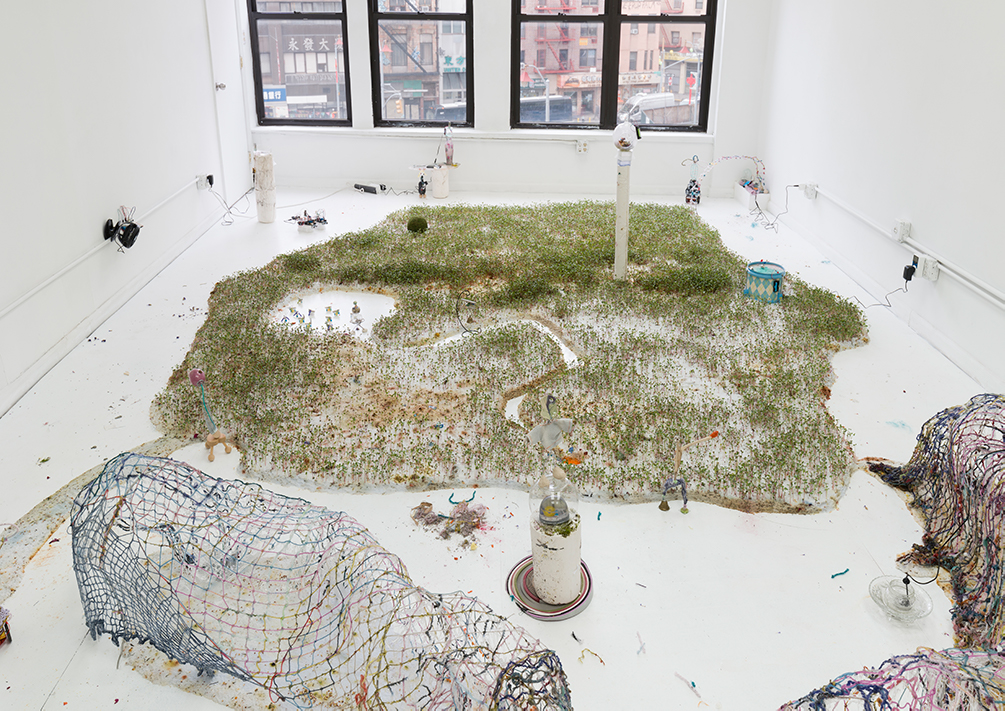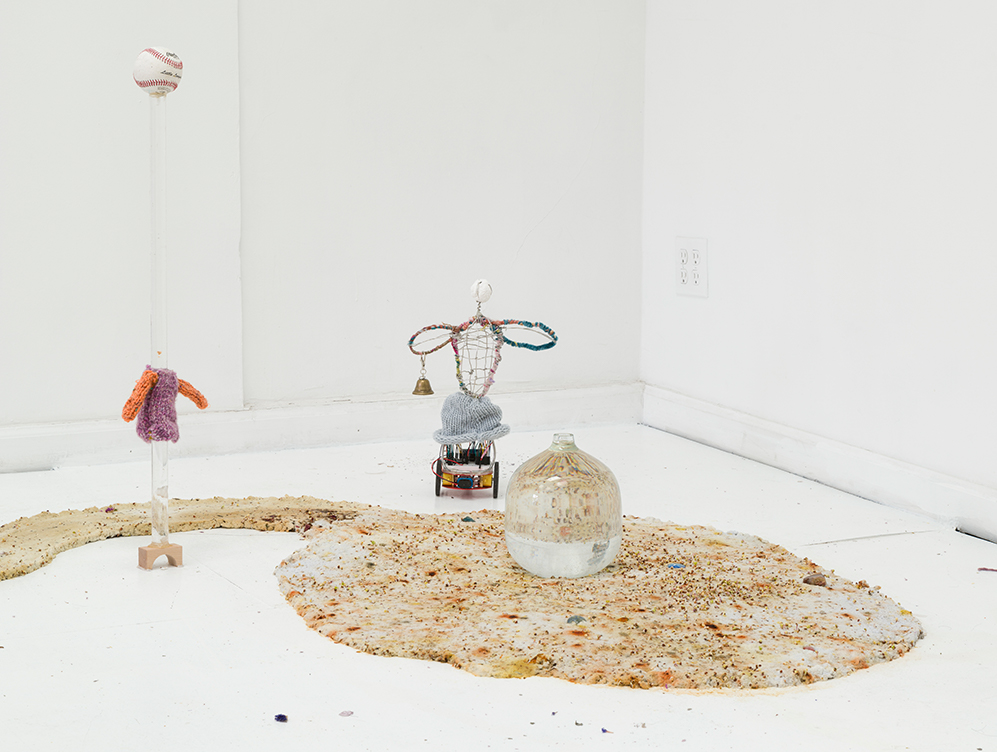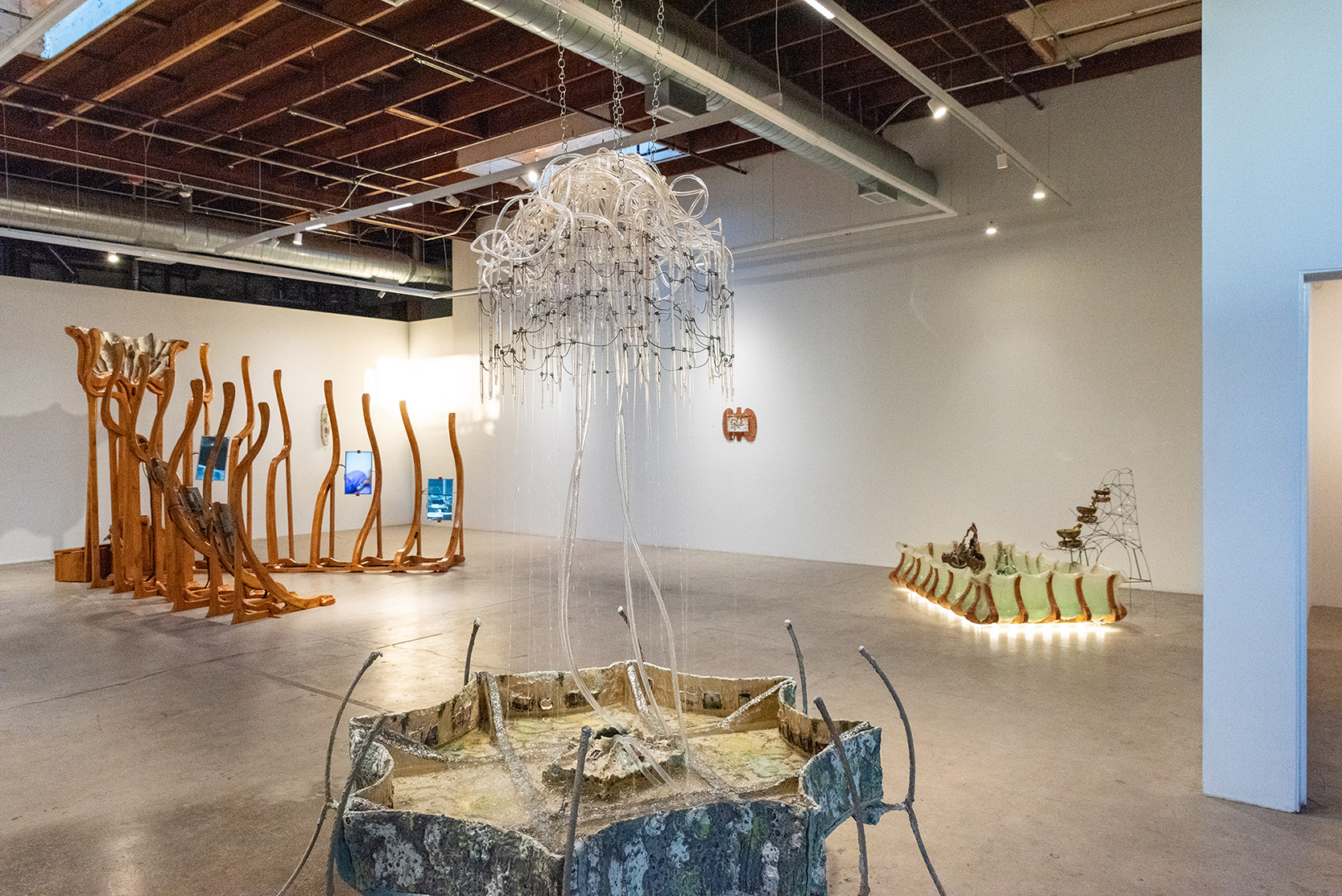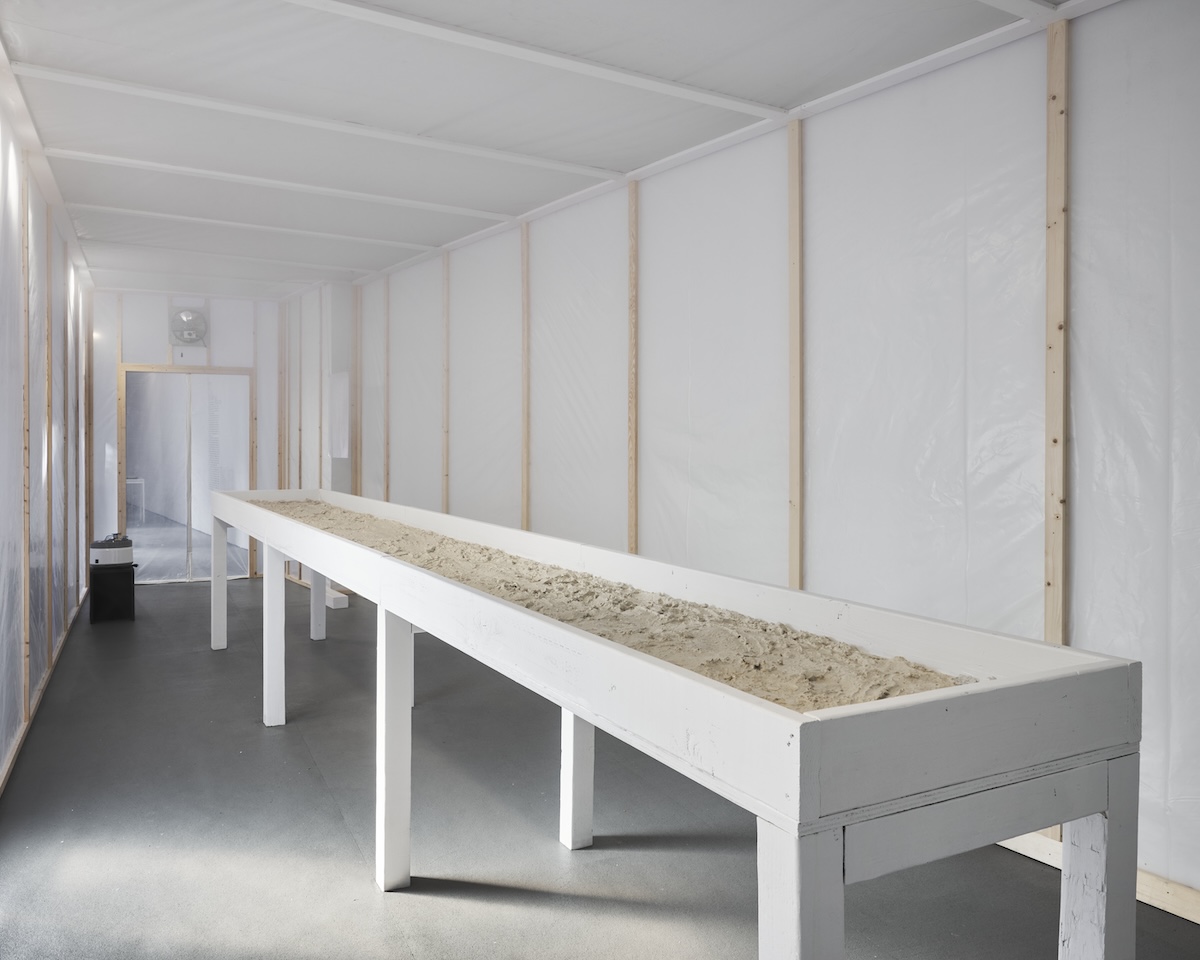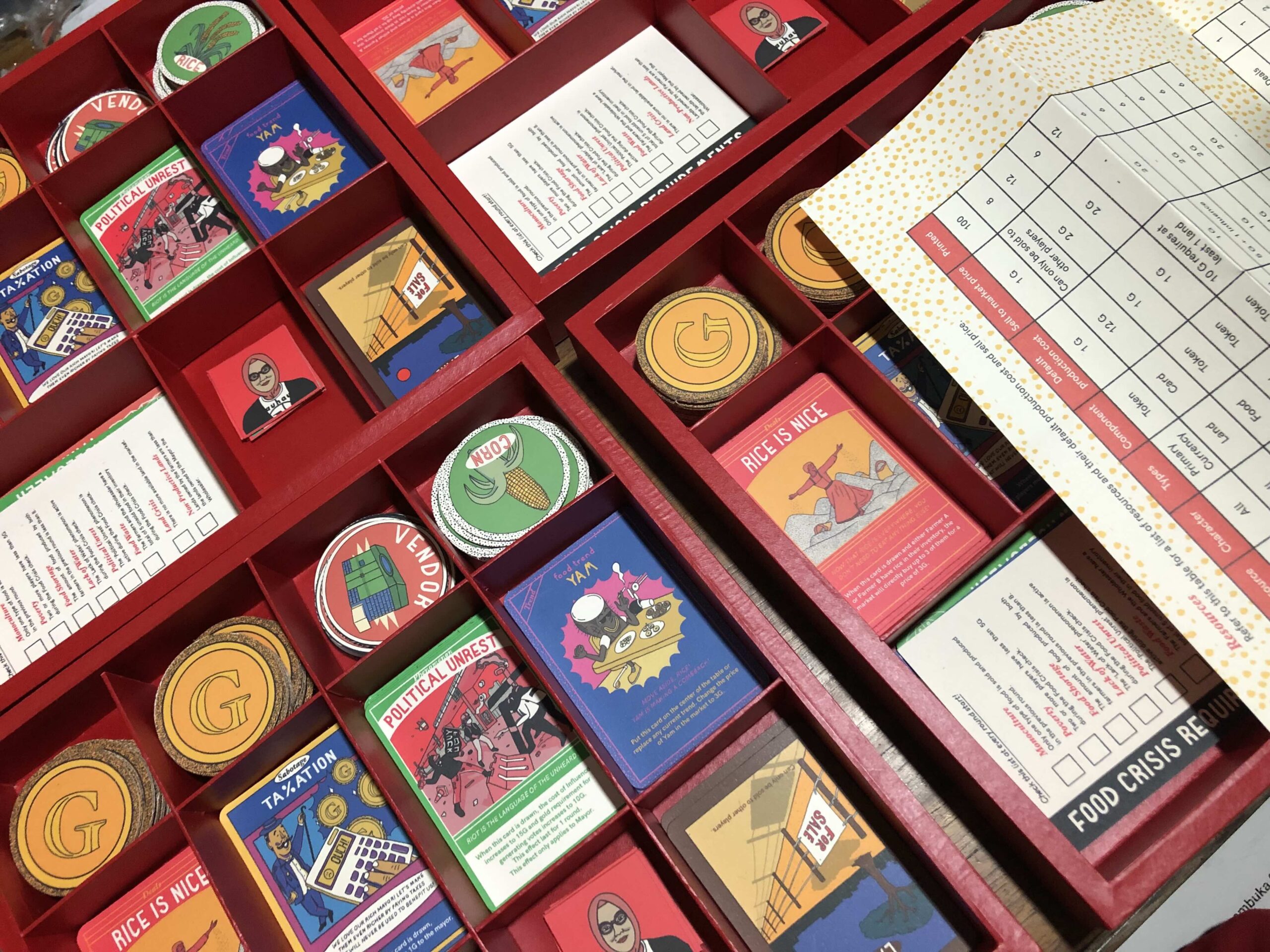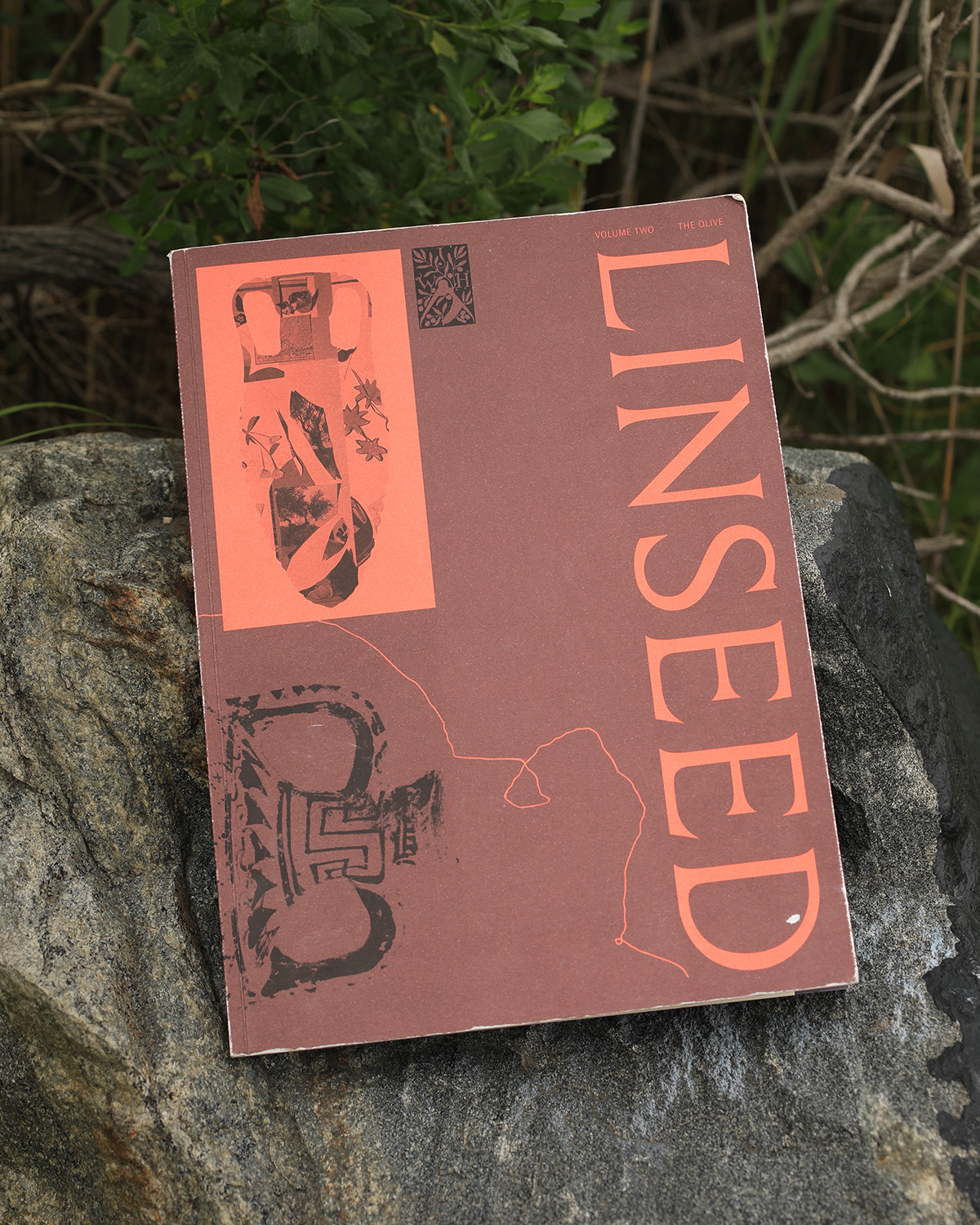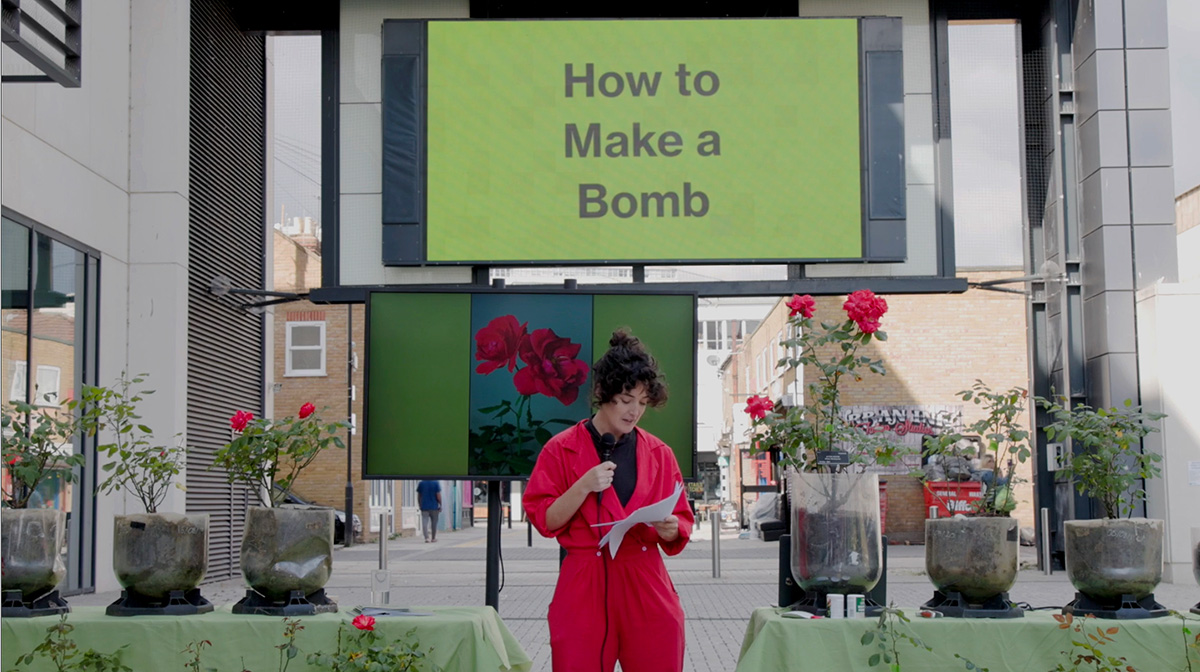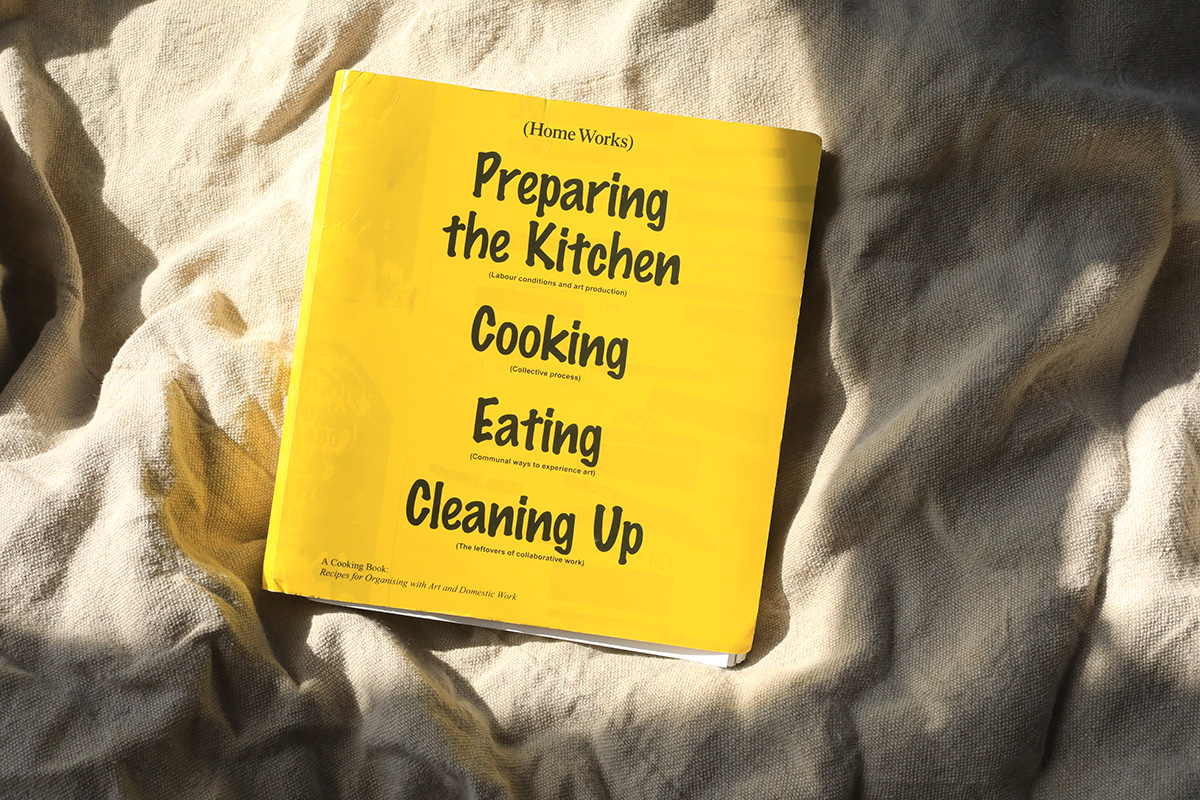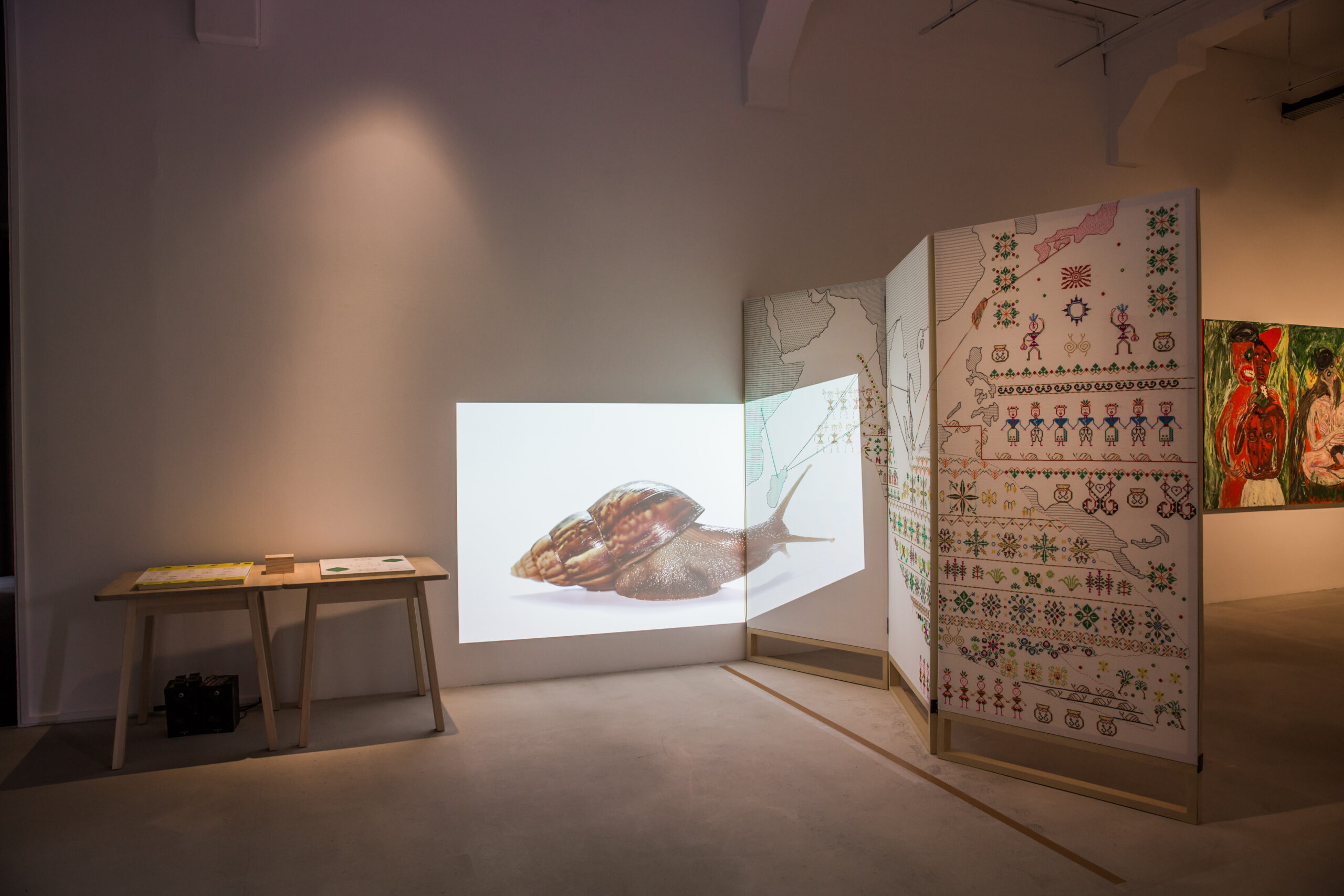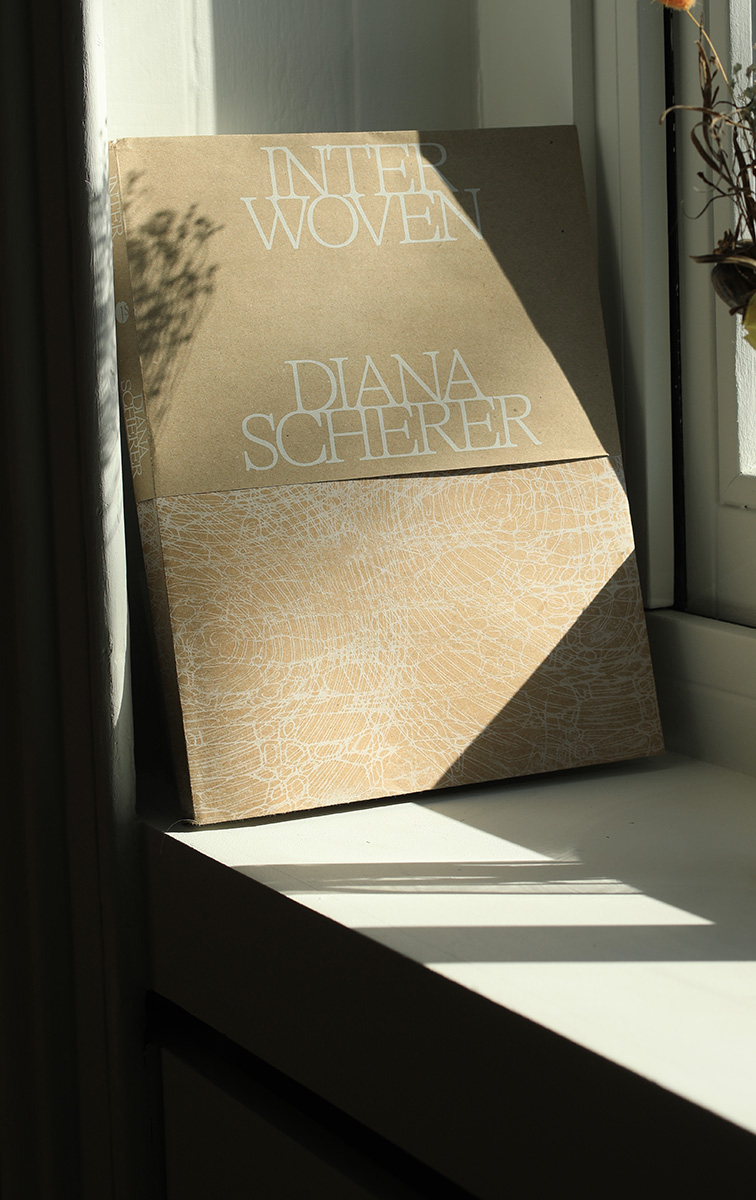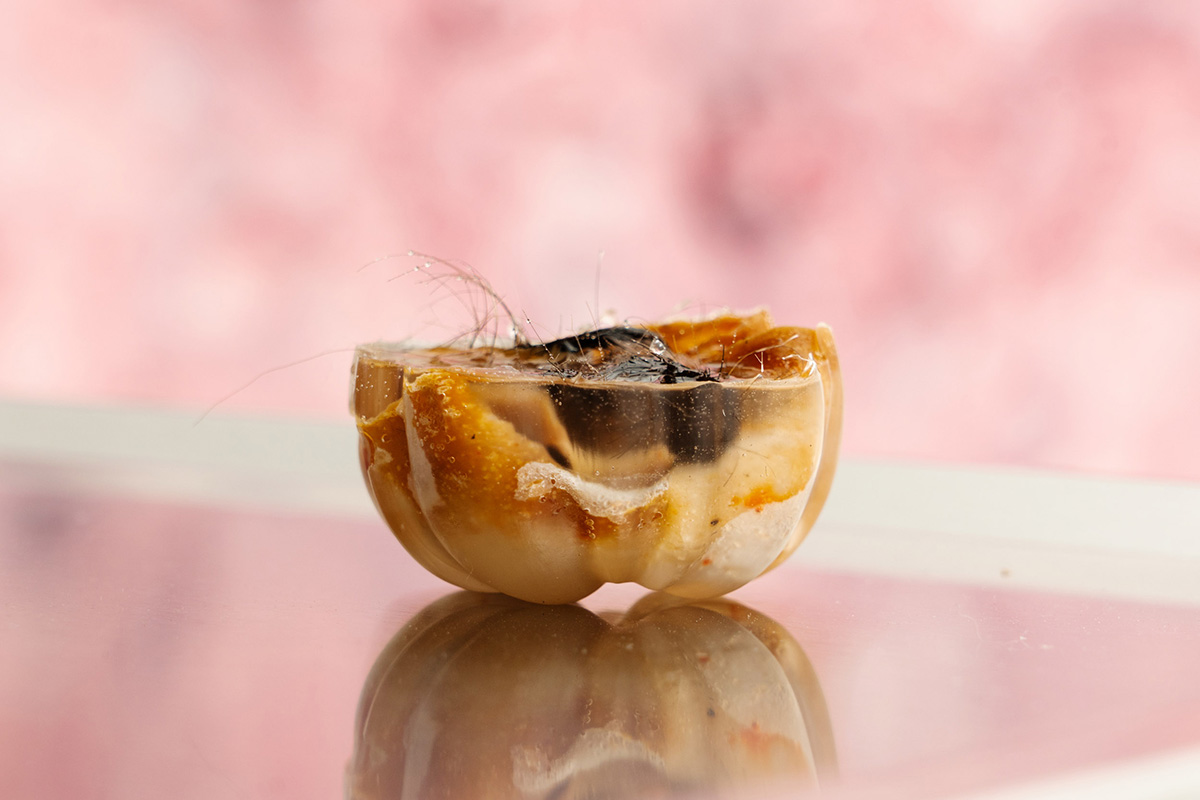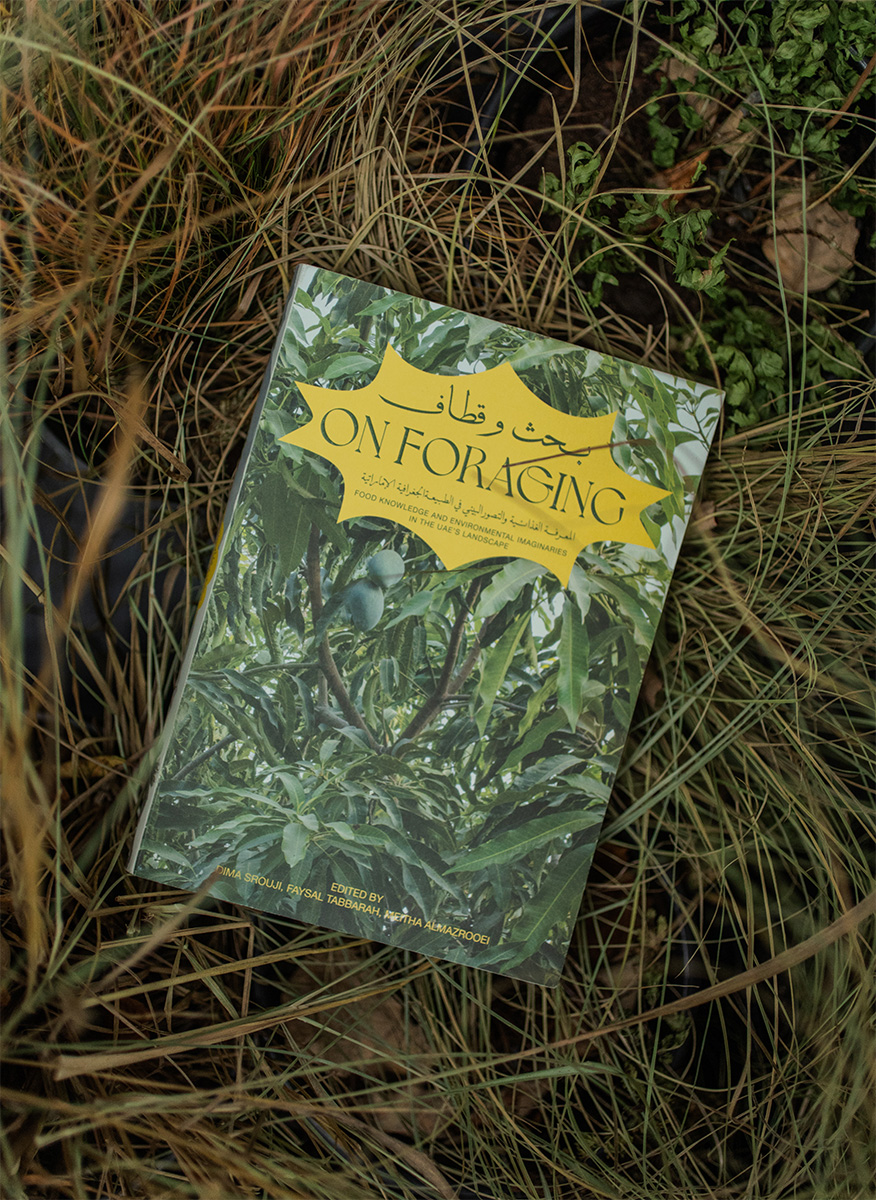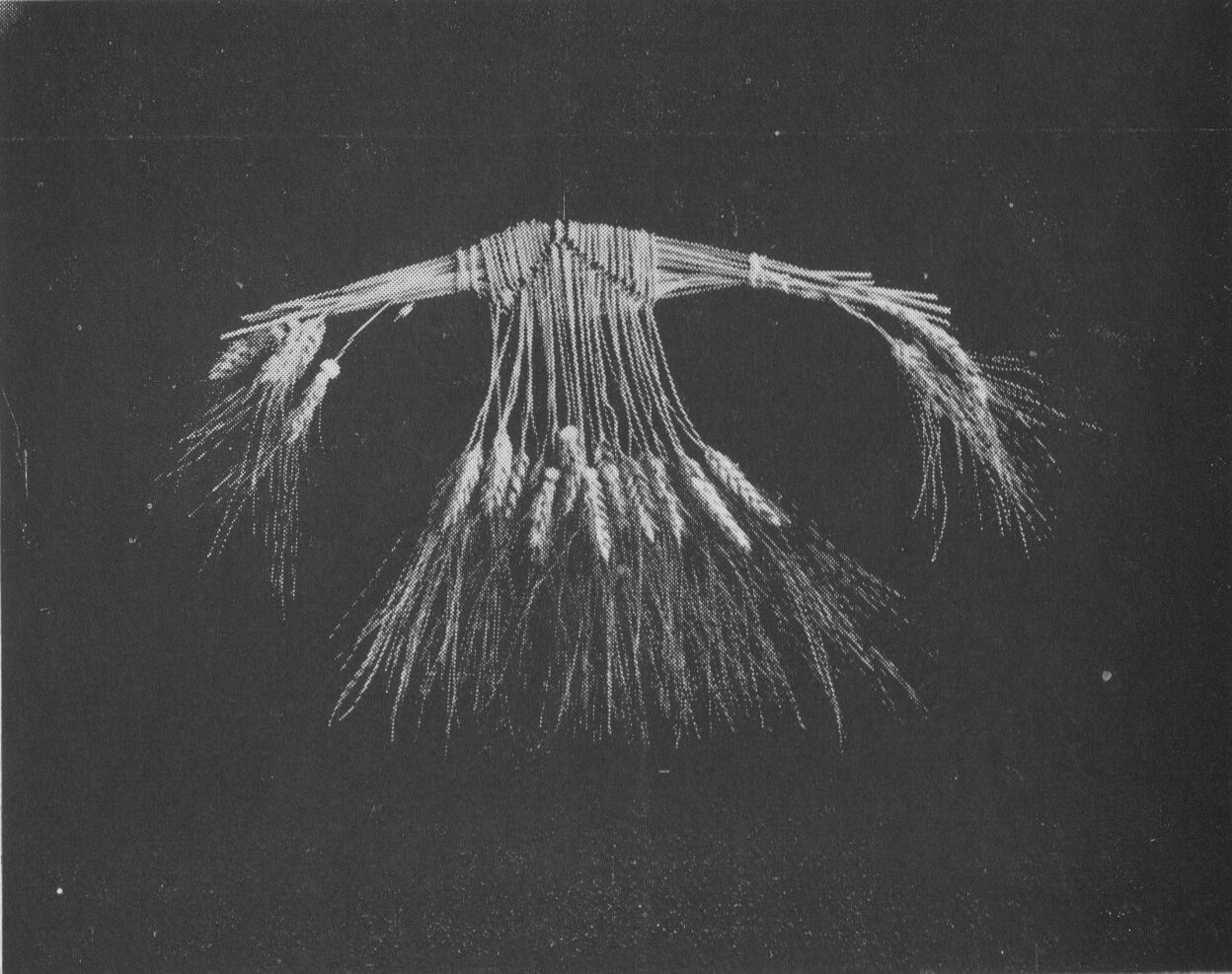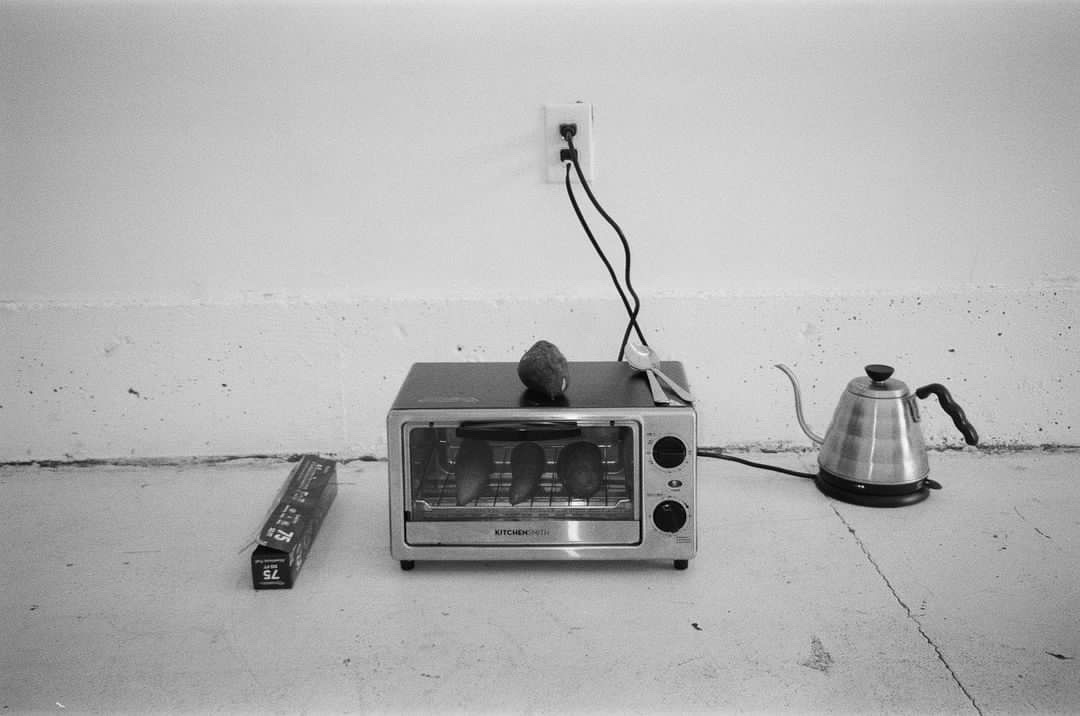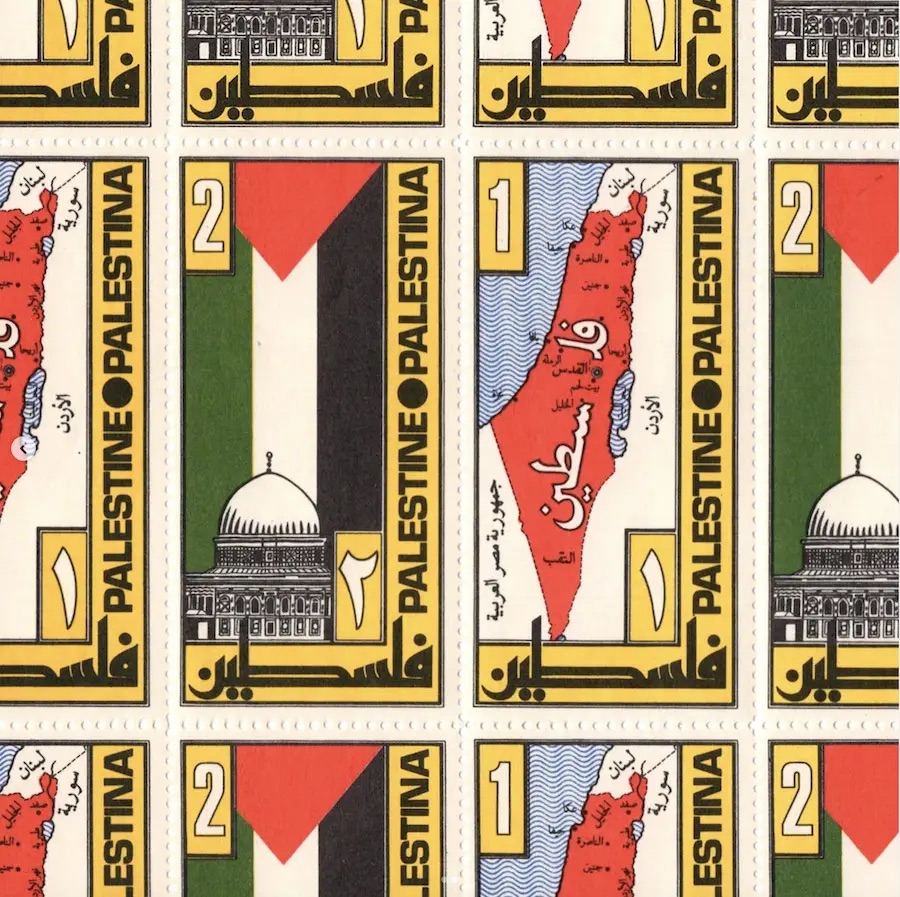The white plywood floors of Chinatown’s Lubov Gallery are puddled with water, delicate streams running from one slanted side to the other; the tilt is not a feature of the exhibition, merely indicative of NYC’s deteriorating pre-war buildings. In ‘Dawning: dust, seeds, Coplees’, interdisciplinary environment artist Mimi Park’s latest immersive exhibition, on view until April 16th, a Lilliputian world springs up from a carpet of tiny, green seedlings that stretch across Lubov’s typically sterile gallery floors. Cultivated from an amorphous pile of wet paper pulp, visitors must carefully sidestep through this spongy structure to reach the bowls of vibrating water, while autonomous robots wheel underfoot and glimmering glass objects are nestled throughout the room.
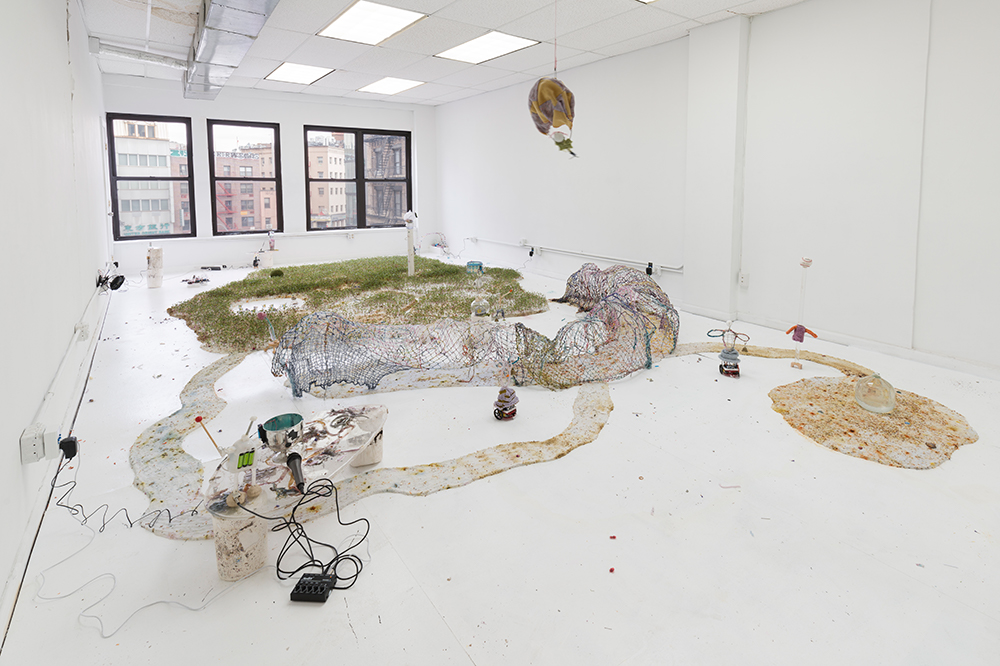
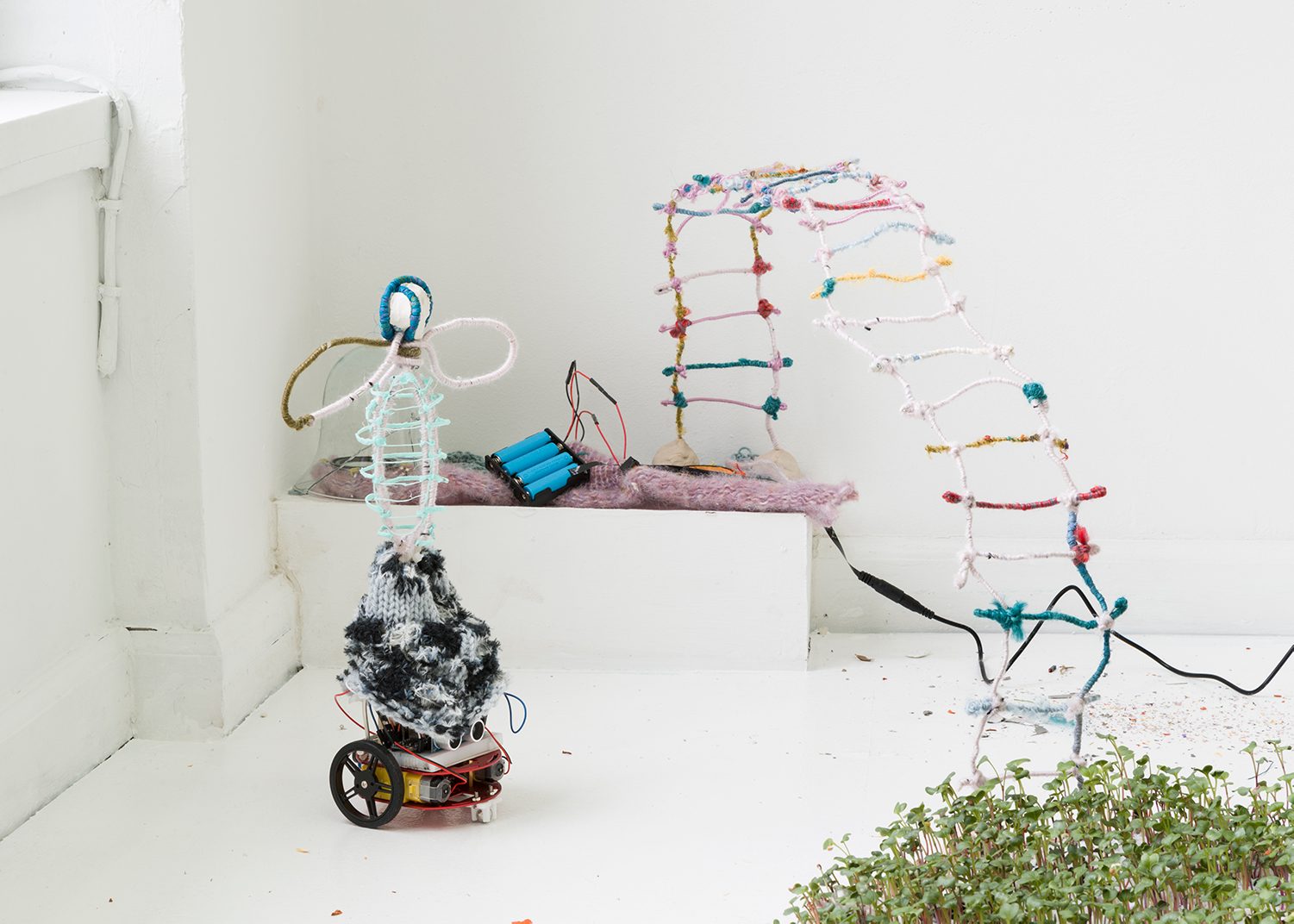
‘Dawning’ is a shift from Park’s other work: lush, digitally rendered worlds that mimic natural landscapes through the sterilized contours of computer graphics. At Lubov, Park has created a playful microcosmic ecosystem that disorients scale. In this landscape, Park invites the visitor to crouch down and re-examine our own discrete perceptions of what is living and what is not. By bringing her world-building practice into the physical realm, Park also introduces an element of maintenance, care-keeping in accordance with the entropy of a shifting ecosystem. On the weekends, Park comes to the gallery to mend her works’ careful structures, in what art writer Reilly Davidson describes as an act of “nurturing her very own Ever Evolving Living Entity” where she is both “the creator and the caregiver at once.”
Park doesn’t work alone, however. Gallery-owner Francisco Correa Cordero says he visits the gallery every day to refill water bowls, charge batteries, clean up spills and carefully spray the damp, spongy floor. He confesses, “I feel like I’m a babysitter now,” noting the exhibit’s departure from the gallery’s past programming. Usually, the room is at its busiest during show openings; now, it is always teeming with activity. Everything in the room is dynamic or alive, and without human guidance—feeding the plants, filling the water, rerouting moving pseudo-creatures—things quickly go awry. The entropy that demands man-made repairs also encourages Park “to play to no end, without direct purpose,” as described by Davidson.
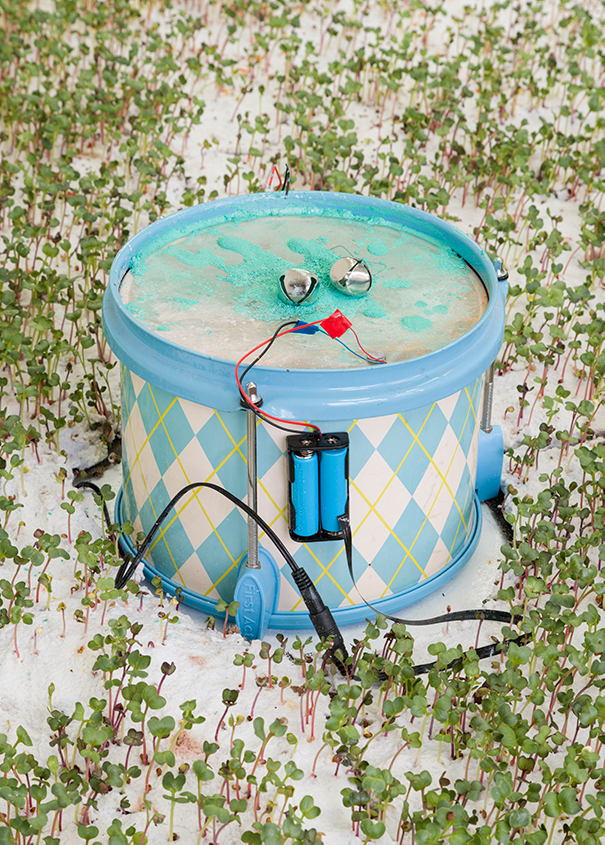
As Airspace and #PlantMom trends have dominated popular cultural aesthetics in recent years: we’ve grown accustomed to Pothos vines covering our homes, the ubiquitous, oversized Monstera tucked into the corners of cafes or even the increasingly popular urban, ag-tech projects like Farmshelf and Square Roots. But plants that grow right from the floor, without a pot or a planting bed, pose a startling affront to our paradigm of what the built environment should look like and specifically, where life should grow—out of our control, even within our dominion. In creating this new world, she emphasizes connectivity, reflecting back to the audience their newfound desire to bring plants indoors by showing us an alternative vision.
Disrupting this foundational binary—living/inert, clean/unclean, inside/outside, self/other, so on—is at the core of Park’s inventive, freaky little world on the fourth floor of a Chinatown building. Park’s exhibit space is much more alive and unruly than its notable counterpart, the Earth Room, decades older and just a mile North in SoHo. Instead, Park invites life in, allowing bumbling, sun-powered robots free reign, and covering every surface with household objects repurposed as decorative toys. Inspired by “microscopic worlds, soft circuitry, and play therapy,” as she outlines in her artist’s biography, Park proposes a new framework for play. ‘Dawning’ is reminiscent of adventure playgrounds, where children were encouraged to engage with risk through play by navigating more dangerous playscapes made of waste materials or by incorporating tools into recreational activities. Park’s exhibit brings us closer to a world we can gently touch, but cannot really know, coursing with dual currents of electricity and photosynthesis; in doing so, Park helps us to “visualize the invisible.” Her vision is profound but light-hearted, asking you to embrace the discomfort of a damp floor, to crouch down and visit the sprouts, to live with the beyond-human, and surrender the boundary of your home.
Mimi Park’s exhibit, “Dawning: dust, seeds, Coplees” will be up until April 16, 2022 at LUBOV Gallery.
